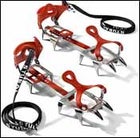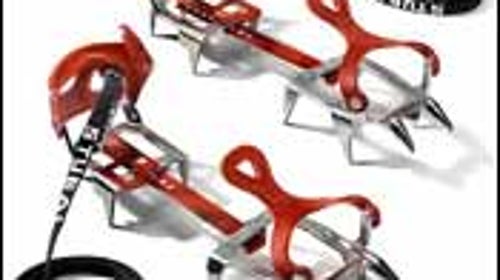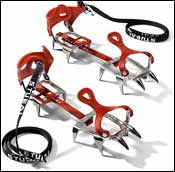There’s some debate in the mountaineering community over this subject, with some climbers believing that aluminum crampons don’t hold up to abuse and hard climbing in the same way that steel ones do. But I must say, for 90 percent of the climbing that 90 percent of the people in the world do, they’re more than adequate. You save weight yet get good performance.
 Stubai Ultralight Universals
Stubai Ultralight Universals
In my opinion, for general snow and glacier climbing, approaches to rock pitches, or as “emergency” crampons tossed into a pack just in case, aluminums are fine. I’d use them on the standard routes up Mount Hood or Mount Rainier, on the various mixed snow-to-rock, moderate-angle climbs we have here in the Pacific Northwest, that sort of thing. For really hard, mixed routes, then maybe steel. Meanwhile, check out crampons such as Stubai’s aluminum Ultralight Universal Crampons ($100; distributed in the U.S. by www.libertymtn.com or www.rei.com). They weigh just 20 ounces, about half what a comparable pair of steel spikes would tip the scales at. Kahtoola’s aluminum crampons ($139; www.kahtoola.com) can more readily accommodate a wide range of footweareven trail runners, which makes them popular with adventure-racing teams. They’re a good choice for lower-angle stuff and the occasional steeper pitch.
As an aside, I’ve also long been fond of the Grivel G10 ($120; www.grivel.com), a lightweight, ten-point steel crampon that’s excellent for general non-technical crampon work.
So you want to climb the big mountains? Rope up for ���ϳԹ���‘s . We map the routes, choose the guides, rate the gear, and get you started on the trail to high adventure.


